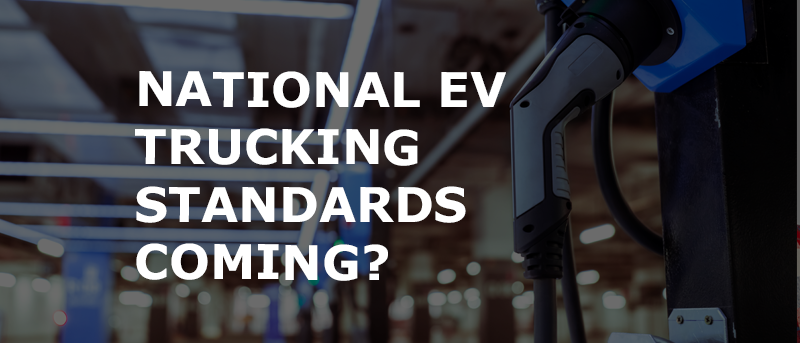How Fleets Can Easily Remove Crash Preventability Off CSA Scores
CNS can help with our Roadside & Incident Report Management service where a team of DOT Compliance Specialists will assess the Department of Transportation safety records
We are a team of DOT Compliance and Licensing Professionals helping trucking and transportation companies remain safe, compliant, and profitable.
CNS or Compliance Navigation Specialists is DOT Compliance company that assists trucking and transportation companies remain DOT Compliant. We are part of a network of companies, CNS Companies, specializing in services related to the transportation, manufacturing, construction, service, education and medical industries.

A full-scale DOT Compliance Program managing a long haul carrier’s safety, compliance, licensing and more.
Learn more >>>
A DOT Compliance Program that keeps motor carriers compliant with the 6 Basic DOT Regulations required of all carriers.
Learn more >>>
Our Short-Haul/Construction Program is a full-scale program designed for private carriers that do not haul for-hire.
Learn more >>>
Our most comprehensive DOT Compliance Program, operating as your company’s off-site Safety Director or assisting your current safety personnel.
Learn more >>>
Our Non-CDL Program is a full-scale program managing safety, compliance, licensing and more for moving companies, couriers, landscapers, or any company subject to DOT regulations and does not employ CDL drivers.
Learn more >>>
Our DOT Audit Services cover a number of different types of DOT Audits that new and existing carriers will be subject to.
Our DOT Driver Services help trucking companies and carriers to stay compliant as they grow and hire more drivers.
Our DOT Vehicle Services focus on ensuring your vehicles are compliant with DOT Regulations, which is just as important as your drivers.
Our DOT Services for Special Carriers focus on companies outside of the typical motor carrier, like HAZMAT, Passenger and Bus Carriers.
CNS is part of a group of companies that offer other necessary services for the trucking and transportation industry, such as Commercial Trucking Insurance, CDL Training, Online Training Course, and even Healthcare.
Our DOT Licensing Services will cover you whether you are an existing company or just starting a trucking company. Our DOT Licensing Specialists can help you get up and running and in days with your DOT number, MC Authority, EIN, UCR, IFTA, 2290 HVUT, Fuel Taxes and can even set you up to get your Commercial Driver's License (CDL) with CNS Driver Training Center.
Our DOT Licensing Specialists will help you with every aspect of starting a trucking company. All you need to do is choose a name for your trucking company.
You will need to ensure your DOT Number, MC Authority, Vehicle Registration, etc. is all set up properly when you start your trucking business.
Our Licensing Specialists can help with all aspects of filing and renewing licenses, fuel taxes, etc.
CNS is part of a group of companies that offer other necessary services for the trucking and transportation industry, such as Commercial Trucking Insurance, CDL Training, Online Training Course, and even Healthcare.
CNS can help with our Roadside & Incident Report Management service where a team of DOT Compliance Specialists will assess the Department of Transportation safety records
CNS or Compliance Navigation Specialists is DOT Compliance company that assists trucking and transportation companies remain DOT Compliant. We are part of a network of companies, CNS Companies, specializing in services related to the transportation, manufacturing, construction, service, education and medical industries.
CNS Companies is a network of companies specializing in services related to the transportation, manufacturing, construction, service, education and medical industries. Our DOT Compliance division is handled by Compliance Navigation Specialists, CNS Insurance handles Commercial Truck Insurance, CDL training is managed by the CNS Driver Training Center and healthcare is managed by CNS Occupational Medicine.
We are a team of DOT Compliance and Licensing Professionals helping trucking and transportation companies remain safe, compliant, and profitable.
CNS or Compliance Navigation Specialists is DOT Compliance company that assists trucking and transportation companies remain DOT Compliant. We are part of a network of companies, CNS Companies, specializing in services related to the transportation, manufacturing, construction, service, education and medical industries.

A full-scale DOT Compliance Program managing a long haul carrier’s safety, compliance, licensing and more.
Learn more >>>
A DOT Compliance Program that keeps motor carriers compliant with the 6 Basic DOT Regulations required of all carriers.
Learn more >>>
Our Short-Haul/Construction Program is a full-scale program designed for private carriers that do not haul for-hire.
Learn more >>>
Our most comprehensive DOT Compliance Program, operating as your company’s off-site Safety Director or assisting your current safety personnel.
Learn more >>>
Our Non-CDL Program is a full-scale program managing safety, compliance, licensing and more for moving companies, couriers, landscapers, or any company subject to DOT regulations and does not employ CDL drivers.
Learn more >>>
Our DOT Audit Services cover a number of different types of DOT Audits that new and existing carriers will be subject to.
Our DOT Driver Services help trucking companies and carriers to stay compliant as they grow and hire more drivers.
Our DOT Vehicle Services focus on ensuring your vehicles are compliant with DOT Regulations, which is just as important as your drivers.
Our DOT Services for Special Carriers focus on companies outside of the typical motor carrier, like HAZMAT, Passenger and Bus Carriers.
CNS is part of a group of companies that offer other necessary services for the trucking and transportation industry, such as Commercial Trucking Insurance, CDL Training, Online Training Course, and even Healthcare.
Our DOT Licensing Services will cover you whether you are an existing company or just starting a trucking company. Our DOT Licensing Specialists can help you get up and running and in days with your DOT number, MC Authority, EIN, UCR, IFTA, 2290 HVUT, Fuel Taxes and can even set you up to get your Commercial Driver's License (CDL) with CNS Driver Training Center.
Our DOT Licensing Specialists will help you with every aspect of starting a trucking company. All you need to do is choose a name for your trucking company.
You will need to ensure your DOT Number, MC Authority, Vehicle Registration, etc. is all set up properly when you start your trucking business.
Our Licensing Specialists can help with all aspects of filing and renewing licenses, fuel taxes, etc.
CNS is part of a group of companies that offer other necessary services for the trucking and transportation industry, such as Commercial Trucking Insurance, CDL Training, Online Training Course, and even Healthcare.
CNS can help with our Roadside & Incident Report Management service where a team of DOT Compliance Specialists will assess the Department of Transportation safety records
CNS or Compliance Navigation Specialists is DOT Compliance company that assists trucking and transportation companies remain DOT Compliant. We are part of a network of companies, CNS Companies, specializing in services related to the transportation, manufacturing, construction, service, education and medical industries.
CNS Companies is a network of companies specializing in services related to the transportation, manufacturing, construction, service, education and medical industries. Our DOT Compliance division is handled by Compliance Navigation Specialists, CNS Insurance handles Commercial Truck Insurance, CDL training is managed by the CNS Driver Training Center and healthcare is managed by CNS Occupational Medicine.

On Feb 28, the Federal Highway Administration (FHWA) and U.S. Department of Transportation (DOT) released a final rule on the National Electric Vehicle Infrastructure Standards and Requirements.
As we have stated in a previous article, the transition to Electric Vehicles, from cars, trucks, and semis, is in its infancy. But Biden is expecting to invest $7.5 billion to grow EV charging stations from 100,000 today to over 500,000 by 2030.
With the huge rise in government and private-funded EV charging to come, this means a national standard and requirements must be established. This is exactly what this final rule tackles from FHWA and U.S. DOT.
With this detailed rule, and answers to previous comments to the earlier proposal, let’s look at what was considered for medium-duty and heavy-duty (MD/HD) commercial motor vehicles.
Related Articles:
According to the final rule, many commenters supported specifically addressing the needs of MD/HD EVs in addition to the needs of EV passenger vehicles.
Several commenters identified the environmental, air quality, rural economy, and equity benefits of ensuring that the applicability of the regulation addressed the needs and parameters of the evolving MD/HD EV sector.
To put it simply, electric vehicles have zero tailpipe emissions whereas, on average, one 15-year-old diesel garbage truck traveling approximately 14,000 miles annually will have emitted more than 1.1 tons of Nitrogen Oxide (NOx) over its lifetime.
Additionally, while 1% vehicles in the United States are Semis, they make up 18-20% of vehicle emissions and over 30% in particulate matter emissions.
In Pennsylvania, fossil fuel vehicles generate 50.2% of the nitrogen oxides in the air, as well as carbon monoxide, fine particulate matter, and hydrocarbons.
This particulate exhaust from diesel trucks can make heart and lung issues worse, and even cause cancer. In fact, more than 10% of adults in Pennsylvania (above the national average) have asthma, according to the CDC.
The real question should be, how are MD/HD electric vehicles being excluded from the final National EV standards?
It is important to note that the MD/HD EV sector is less evolved than the light-duty EV charging sector and that, because this portion of the industry is still in its infancy, there may be a need to continue to monitor technological developments before solidifying certain requirements specific to MD/HD EV needs.
While many medium-duty vehicles will likely charge at fleet depots and operate under hub-and-spoke business models where they would not venture significant distances from their base locations, a growing sector of MD/HD vehicles will require on-corridor charging.
Some commenters suggested that these requirements be designed so as to consider the future accommodation of power demands, site use/circulation needs, and set a certain number of federally-funded EV charging parking spaces be designed to accommodate MD/HD needs for long-haul trucking.
The FHWA said they cannot regulate minimum standards that have not yet been identified or innovated in the industry; as such, FHWA has not modified the language in this final rule to specifically accommodate MD/HD needs so as not to preempt the pace of the technological innovation.
More importantly, the rule does not preclude MD/HD charging infrastructure and FHWA strongly encourages project sponsors to consider future MD/HD needs.
The FHWA specifically encourages the inclusion of pull-through EV charging parking stalls in the design of EV charging stations. Pull-through EV charging parking stalls are acknowledged as better suited to the needs of MD/HD vehicles.
But again, while FHWA agrees that although there are advantages to lumping charging sites with travel amenities where feasible, this is not required by regulation in the final rule to both provide flexibility in locating stations where they are otherwise needed but these amenities are not available, and to reduce the cost burden for installation.
The FHWA will continue to monitor the technological advancements in the MD/HD industry for consideration as to whether further regulation is needed to provide applicable minimum standards and requirements at a future date.
First announced in December 2020, “Electric Island” in Portland, Oregon represents the first location specifically designed for medium- and heavy-duty trucks and has eight vehicle charging stations for electric cars, buses, box vans and semi-trucks.
At the time, the highest power unit installed at the Swan Island charging site is 150 Kilowatts, but it can go up to 350 kilowatts.
The station will eventually bring five megawatts of power from the grid with both 400-Volt and 800-Volt charging available, and some of the units will go to 1,000 volts.
During the Pepsi delivery event of the Tesla Semi, Tesla announced that the vehicle will charge at a megawatt level, as the company developed a new charging station for 1+ MW of DC charging.
The new charging technology allows the truck to gain 70 percent state of charge in just 30 minutes.
To achieve a 1 MW charging level, and maintain a thin/light/flexible charging cable, Tesla developed a new V4 charging cable, which uses a new immersion cooling technology. It’s not said how high the power might go.
However, to handle 1+ MW charging (especially multiple stalls at once), Tesla intends to equip its fast charging stations with battery energy storage systems, based on the Tesla Megapacks.
The FHWA has concluded that the provision of multiple levels of power availability at charging stations would detract from the goal of standardization and from the ability to deliver a convenient, affordable, reliable, and equitable solution for EV charging. The FHWA also considered the requests to modify the power level requirements to accommodate emerging technologies and found that the minimum power level requirements in this final rule sufficiently accommodates emerging technologies to serve the needs of MD/HD EVs.
Technologies such as in-road wireless charging are nascent, so FHWA finds addressing standards in this final rule to be premature.
The FHWA will continue to monitor the technological advancements in inductive and catenary charging for consideration as to whether further regulation is needed to provide applicable minimum standards and requirements at a future date.
Many commenters identified an opportunity to coordinate MD/HD charging with required off-duty breaks for long-haul truckers.
One commenter noted that the regulation should consider dwell time needs for MD/HD charging and ensure that dwell time fees not penalize MD/HDs for their longer dwell times for charging.
Site design and lumping of amenities accommodating MD/HD needs could serve multiple purposes beyond charging and required HOS breaks; the gap in long-haul trucking duty cycle could also be leveraged for required inspections.
However, this falls with FWHA’s previous statement that “while FHWA agrees that although there are advantages to lumping charging sites with travel amenities where feasible, this is not required by regulation in the final rule to both provide flexibility in locating stations where they are otherwise needed but these amenities are not available, and to reduce the cost burden for installation.”
Commenters noted that cybersecurity is of particular concern for MD/HD charging because the trucking industry is a high-value target for malicious actors and cybercriminals and requested consideration for specific cybersecurity requirements related to EV charging.
The FWHA notes that the final rule does not impact program funding and thus cannot regulate a set-aside for future MD/HD charging infrastructure or cybersecurity requirements.
This will have to be considered in future EV standards moving forward.
The FHWA considered the implications of the language in the proposed rule regarding payment methods for MD/HD charging applications.
Because charging stations are statutorily required to either serve the general public or to serve commercial motor vehicles from more than one company, fleets with enterprise payment agreements must still use some method of payment or authentication.
This can be accommodated by the same near-field-communication system that accepts payment from major debit and credit card providers or through Plug and Charge.
Filing IFTA Fuel Taxes gets complicated when dealing with tracking receipts, managing mileage logs, matching fuel to taxes, chasing down drivers, and filing with each jurisdiction. For these reasons, trucking companies will have us, a full-service tax provider, manage the process.
Our IFTA Fuel Tax Specialists will work with you to collect your data, ensure your fuel and mileage match, prepare your filings and even file the paperwork for you.

If your lights aren’t on at night, but they work, that’s no longer an OOS violation, though it’s still a violation of state laws to

Article written by Tim Miller, CNS How stressful is your job? Do you think about it while off the clock? Does it make you anxious

While checking for the presence of alcohol or controlled substances during an inspection, inspectors will: Observe the driver for signs of alcohol or controlled substance;

Many companies, including motor carriers, are now required to report information to FinCEN about the individuals who own or control them, or face fines. Here’s
Our DOT Compliance Programs ensure it is your top priority and keeps your business running.
Receive the latest transportation and trucking industry information about FMCSA and DOT Audits, Regulations, etc.

If your lights aren’t on at night, but they work, that’s no longer an OOS violation, though it’s still a violation of state laws to

Article written by Tim Miller, CNS How stressful is your job? Do you think about it while off the clock? Does it make you anxious

While checking for the presence of alcohol or controlled substances during an inspection, inspectors will: Observe the driver for signs of alcohol or controlled substance;
Join our monthly newsletter and stay up-to-date on trucking industry news and receive important compliance and licensing tips.
Join our monthly newsletter and stay up-to-date on trucking industry news and receive important compliance and licensing tips.